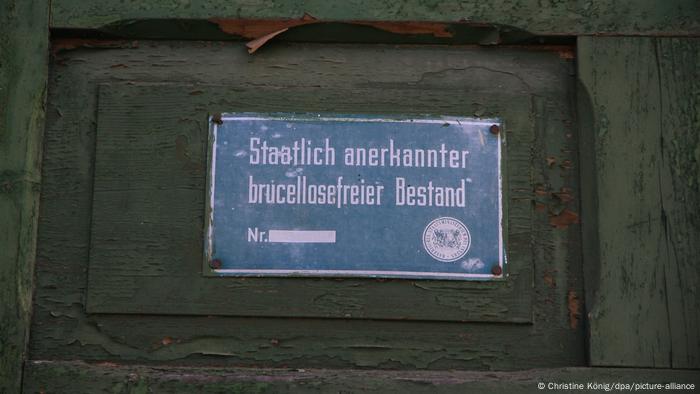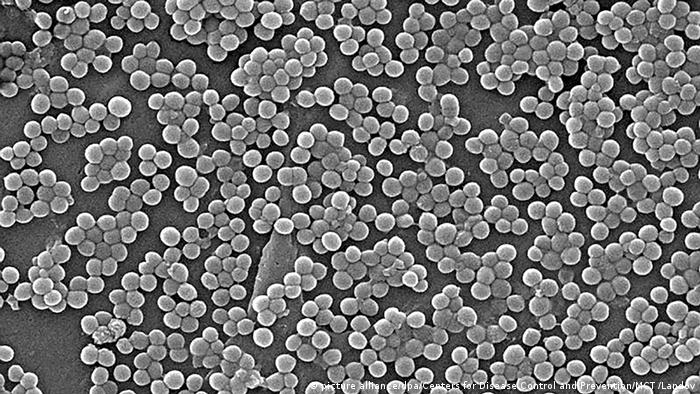Zoonoses: Brucellosis outbreak in China raises local concerns - DW (English)
More than a year after bacteria escaped from a factory for vaccines against brucellosis in northwest China, an outbreak of the disease in the region has raised concerns about how many people might really have been infected and the wider consequences.
So far, 3,245 people have been confirmed as infected with the Brucella bacteria, according to figures reported on the website of the health commission of the city of Lanzhou in Gansu province, which date from September 15. The party newspaper Global Times on November 5, however, puts the number of infected higher, at 6,620. There are another 1,400 suspected cases. More than 21,000 people have been tested.
Even if at first glance this news is reminiscent of the unverified rumors about SARS-CoV2 escaping from a Chinese research laboratory in Wuhan, this time, at least, it is not an unknown or novel disease that is in question.
Nonetheless, these cases once again remind us how quickly pathogens can spread from animals to humans when the natural buffer shrinks — something that is occurring more and more as cities grow ever larger, people move closer together and the amount of pristine nature is reduced.
Read more: Coronavirus: How do biosafety laboratories work?
What is brucellosis?
Brucellosis is a disease contracted through infection by bacteria of the genus Brucella. The disease is widespread worldwide in domestic and farm animals, with major regional differences. Humans, in turn, are at risk from infected farm animals. Endemic areas are the Mediterranean region, the Arabian Peninsula, Africa, Asia and Central and South America.
In Germany, the cattle, sheep and goat populations are considered brucellosis-free. Cases of the disease in animals in Germany are, therefore, usually imported through the animal trade or occur through transmission from wild animals to farm animals. Brucellosis is subject to the Infection Protection Act, which gives the state strong powers to prevent its spread. In Germany, 24-37 cases per year have been registered in recent years.

In Germany, cattle, sheep and goat herds are generally considered to be brucellosis-free
Human-to-human spread is extremely rare and has so far been reported almost exclusively in cases where breastfeeding mothers have transmitted the disease to their infants. In individual cases, transmission has occurred through bone marrow transplants, blood transfusions and sexual intercourse.
How does an infection progress?
In most cases, humans become infected through direct contact with infected animals and through contaminated food. The main source of infection is contaminated, non-pasteurized milk or products made from it, such as raw-milk cheese.
However, the pathogen is absorbed not only via the gastrointestinal tract, but also via the conjunctiva, the respiratory tract and injured skin. Brucellosis is one of the most common laboratory-acquired infections caused by bacteria.
The incubation period is five to 60 days. However, diagnosis is difficult because most cases are subclinical, meaning that only very mild to subliminal symptoms occur.
A Brucella infection can also be accompanied by a range of very different symptoms that are more severe. These include flu-like ones, such as fever, nausea, fatigue and headaches, but also night sweats, loss of appetite and gastrointestinal complaints. Their similarity to those of other illnesses also makes the disease hard to pick.
Unrecognized or poorly treated cases can sometimes become chronic.

The health commission says the bacteria leakage from the factory was caused by disinfectants past their use-by date
If there is a case of suspected infection, a blood test is performed in the laboratory, and the results are available within a few days. Specific antibodies against the pathogen can be detected in the blood serum in cases of infection.
Brucellosis is usually treated with a combination of different antibiotics. If the case is acute, the therapy lasts six to 12 weeks; in a chronic case, antibiotic treatment is extended to up to six months. The success of the therapy is monitored by regular blood tests.
How can I protect myself?
In veterinary medicine, there are two live vaccines; a vaccination against brucellosis in humans is not yet possible.
To prevent becoming infected, people should avoid eating raw meat and boil milk or use pasteurized milk, especially in countries where the pathogen is still widespread.
People who are in contact with animals on a professional basis, such as veterinarians or farmers, should clean and disinfect their hands thoroughly after each contact and change their clothing.
What happened in Lanzhou?
According to the health commission, the reason that the bacteria escaped at the vaccine company in July and August 2019 was that waste in tanks had not been properly sterilized due to the use of disinfectants past their expiry date.
The commission said bacteria in liquids had escaped into the environment in the form of aerosols via the ventilation system, leading to students and teachers at the surrounding Animal Research Institute of the Academy of Agricultural Sciences in Lanzhou becoming infected.
State media said that in December 2019 that almost 200 people had tested positive for antibodies. Only one case also showed symptoms, they said. However, the new figures indicate that the extent is greater than was previously known.
The party newspaper Global Times spoke of "widespread public concern about treatment and consequences for infected persons." On the Chinese messaging service Sina Weibo, the topic climbed to the top of the search list as millions of people looked for more information about the disease.
In January 2020, the factory had its license to produce brucellosis vaccines revoked. The company apologized for the incidents in February. In mid-July, the health authorities launched a campaign against the infections.
The tests are free of charge and there are also standardized treatments. The victims are also to receive compensation.
According to the latest Global Times report, eight people have now been "held accountable." It says a total of 55,725 people living or working near the factory have been tested so far, representing 97.5% of the total population in the Yanchang Road subdistrict, the worst-affected area. In all, 6,620 people have been confirmed as being infected, it says.









Comments
Post a Comment